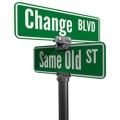
Value Chain analysis is a process improvement methodology developed by Michael Porter of Harvard Business School in the 1980’s. It is a part of the field of strategic analysis.
The “value chain” refers to the process of creating value throughout each step of of the business chain. For example,
- An exploration company creates value by discovering iron ore in a mound of dirt which had no value to start with.
- A mining company purchases the deposit and adds value by selling the iron ore.
- A steel manufacturer takes the iron ore and adds value by converting it into steel.
- A building contractor adds value by putting the steel together with many other components into a functional building.
The steel, as part of the building, is worth much, much more than any of the parts of the value chain individually. There are, of course, many more steps in the value chain for a building than this.
A firm’s competitive advantage, then, derives from the increase in value that occurs between the cost to provide its product/service and the cost it sells it for. This can take one of two forms. Either the firm provides a lower cost than its competitors, a low-cost advantage, or it offers a premium product/service that customers are willing to pay more for, a differentiation advantage.
Value Chain analysis involves three steps:
- Identify activities in the value chain
- Analyze activities
- Evaluate potential improvements
Identify Activities in the Value Chain
The initial step is to map out and define the value chain. Because you are able to charge for the product or services you provide, there is an increase in value. Which processes contribute to that increase in value? It should be broken down into 5 – 10 steps. This includes primary operations such as production, logistics, marketing and service. It should also include secondary operations such as human resource management, procurement, technology, and management.
For example, an auto repair shop might have:
- Diagnosing the problem
- Ordering parts
- Performing the repair
- Testing
- Dealing with customer
Analyze Activities
Once the value chain is defined, each process can be analyzed. This includes the following steps:
- Determine the total value chain attributed to your organization. For some businesses this is a straight forward calculation, i.e. subtracting the input costs of a product’s component parts from the selling price. For others, it might not be that simple but the concept still applies. The auto repair shop, for example, might take the overall revenue from auto repair minus the overall cost of parts, divided by the number of vehicles repaired (simplified for clarity).
- For each activity identified earlier, determine the value chain attributed to it. This will often be subject to alot of assumptions. But even so it is a necessary and important part of the exercise. For the auto repair shop, you might come up with 20% for diagnosing the problem, 5% for ordering parts, 45% for performing the repair, and so on.
- Determine the underlying cost factors for each activity. In other words, why is the value chain dollar value where it is? In the next step, each of these underlying cost factors will be analyzed to determine if and/or where improvements can be made. For the auto repair shop, the diagnosis of the problem might have underlying factors such as skill of mechanic, type of automobile, age of car, etc.
Evaluate Potential Improvements
As mentioned above, there are two sources of competitive advantage: Low-cost, where your value chain is cheaper than competitors, and Differentiation, where you’re providing something competitors are not (either a better product or premium version of the same). Improvements will need to be focused in one of those two directions.
Here are a few ideas:
- Providing additional support for your product can result in a strong differentiation. From my experience, it’s not very hard or expensive to outsource a call center, even one that is not in a low-cost country. I am assuming you are not the product manager for iPhones or anything…
- Adding features can move a product up the value chain very quickly, but is one of the hardest things to implement.
- Increasing price will directly move a product up the value chain, as long as it does not result in lost business. But if you haven’t looked at the supply-demand curve for your product lately, or someone else determined the pricing and it’s in the wrong place, maybe a market analysis will result in some low hanging fruit.
- Reducing costs in the manufacturing or production process will result in direct gains in the value chain. Maybe it’s time to take a good look at what can be upgraded and how much it would save.
- Increasing brand value will allow increases in prices for all products and services, but is also very difficult to achieve.
Value Chain Analysis Example
For our engineering company, which is purely a services business, we identified the following value chain. This is for a typical bridge replacement project, and represents the average of each step:
- Perform analysis of options – $20,000
- Design new bridge – $55,000
- Tendering and contract administration services – $10,000
- Construction-related engineering – $45,000
- Project management and close-out – $20,000
Although the size of projects varies drastically, the averages would suggest that the entire value chain is worth about $1,300,000, of which we as the engineering company take an average of $150,000. Our inputs are surveying, environmental studies, and planning reports, and we convert that into an engineering design.
From the analysis of our part of the value chain, we can deduce that the speed with which the services are delivered is a factor which can be improved, as well as quality and accuracy of the design. Also, we can also increase differentiation with strong client relationships, because repeat clients reduce project acquisition costs and command higher prices.





